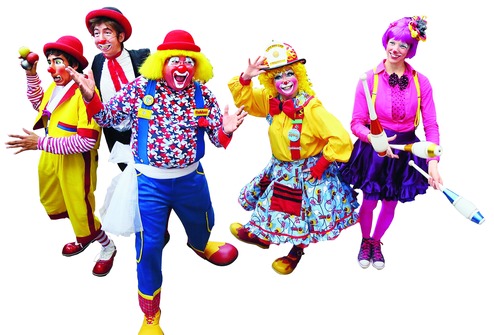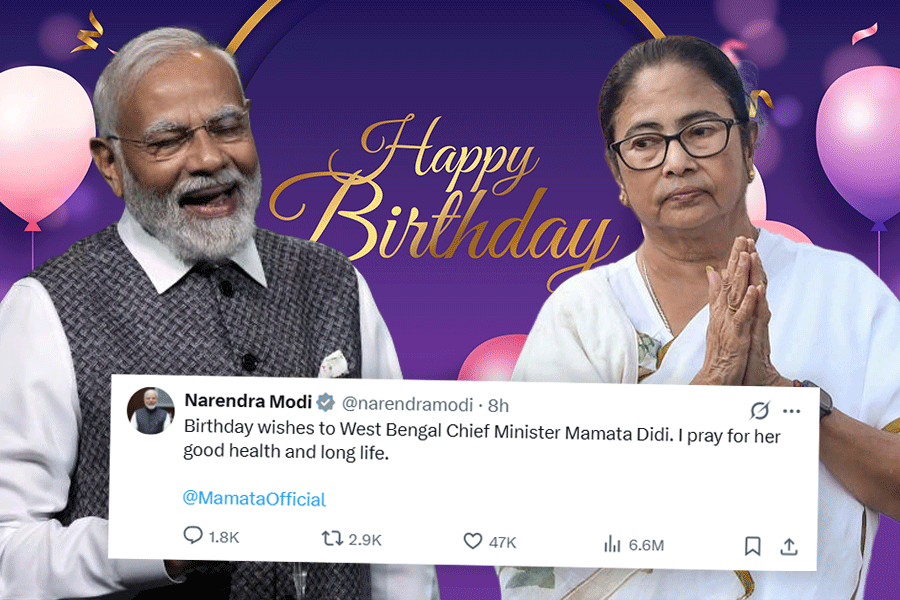
Siane Valini D' Cruz paints her face pink, then fixes a red plastic ball firmly on the tip of her nose. Her chin is painted white to bring out the scarlet of her lips. Dressed in a purple jacket, yellow trousers and a pair of oversized red and yellow boots, the 17-year-old makes her entry. It is a children's birthday party. As the music starts to play, she throws her juggling balls up in the air and whoops of joy fill the room.
"When a cranky child laughs, I believe, I have done my job well," says Siane, a Mass Media student from Mumbai's St. Xavier's College. Chris Saldanha is a BSc student from the same college. While Siane stumbled upon clowning, Chris took it up to earn a few bucks during the summer holidays two years ago - if he does five shows in a month, he makes about Rs 10,000. Professionals, we are told, make Rs 50,000 and upwards in a busy month. Both Siane and Chris are undergoing clown training.
Circuses may have disappea-red but clowning hasn't. Martin D' Souza, founder-director at the Mumbai-based entertainment company, Light House Entertainment and Mad Hatters, says clowning is gaining popularity across India.
What US-based clown Kenneth R. Ahern says of the West perhaps holds true of India too. His email to The Telegraph reads, "In the last decade there has been a growth of youth circus training camps throughout the US and Europe. This has moved circus artistes who have graduated from these schools to find both traditional and non-traditional performance venues to present their skills." Ahern runs a clown camp annually at the Fine Arts Center of Viterbo University in Wisconsin.
With the change of setting, from circuses to malls, private parties, carnivals, family gatherings, we in India have a new set of clowns - educated middle-class youth such as Siane and Chris. The change in demographics, those in this business will tell you, has not taken away from the art, only imbued it with greater power, purpose and responsibility.
Pam Moody, president of the World Clown Association (WCA), talks about clowning as a teaching tool. She says, "Clown shows capitalise on emotions. It is proven that regardless of age, retention of messages is higher whenever an emotion is involved." Moody herself began by presenting faith-based lessons through comedy. Her clown name is Sparky.
D'Souza, who runs training camps across India, talks about the large number of clowns involved in what is called "caring clowning". They visit ailing children in hospitals, veterans in medical care facilities, hospice and rehabilitation center inmates.
The concept exists in other parts of the globe too. Edmund Khong, the first Singaporean to win the World Clown Association's Best All-Round Clown this year, says, "I am exploring various avenues to teach Singaporeans caring clowning to serve the community. When the public recognises the positive impact clowning can create, it will slowly grow to be more widely accepted and welcomed."
Moody remembers one time when she was performing in Chennai and a pregnant woman came up to her, took her hand and placed it on her belly and said, "Because of you, I laughed. My baby will be born more healthy now."
D' Souza's clown persona is called Flubber, a master of all trades. Flubber can perform magic, do acrobatics, juggle, do balloon sculpting...
Since this brand of clowning is still nascent in India, D'Souza has been organising countrywide clown fests since 2010. At these fests, clowns of international renown perform. D'Souza, who has been clowning for the past 26 years, says, "What Indians are usually exposed to is slapstick, wherein two clowns slap each other or pat each other with a small bat - something we used to see in circuses. But this festival gets clowns from different parts of the world. Now, people here know that clowning is a serious act where clowns follow a script - perform a skit - engage with people."
The idea of clowning, he says, is to get into funny difficult situations in the act and then come out of them - it's this disentanglement process that makes people laugh.
Though D'Souza has been running Mad Hatter these past 27 years, he got himself a clown certificate in Clownology from the University of Wisconsin in the US in 2004.
But if being a good clown is all about having the right attitude, why this sudden urgency for structured training? Ahern says, "If a clown has done his or her job well, a wonderful memory is created. But this is not achieved by simply wearing a silly costume, clown make-up and a red nose. Creating this joy is best done through proper education."
There is an entire genre of supernatural horror flicks that project the clown as an evil, deviant figure - Stephen King's It and the new season of American Horror Story. But organisations such as the Sweden-based group Clowns Without Borders (CWB) and WCA are rallying against this portrayal.
Rupesh Tillu or Popo, as he is known in clowning circles, is younger than D'Souza, has an Master of Fine Arts in Physical Comedy from the National School of Dramatic Arts, Sweden. You might recognise him from the Ship of Theseus (2013) - he played Ajay, friend of Navin, one of the protagonists. He has travelled widely with CWB for performances. Palestine, Israel, Egypt, Moldova, Jordan, he rattles off names.
Tillu recounts the time he performed in a refugee camp at Zaatari in Jordan. It was the day after thousands of refugees arrived from Syria. Says Tillu, "It's not easy to make anyone laugh and these were people who had fled their homes to escape war and walked miles for survival."
Tillu's Popo is a persona who is continuously in search of a home. Vulnerable and naive in a highly complicated world, he makes all efforts to fit in, but always ends up failing. Something touched a chord, resonated, because at the end of the act the children in the au-dience started jumping and shouting for joy. "It evoked so many emotions in them at one time," he adds.
Back in India, Tillu is part of a CWB project in Mumbai's redlight areas. He also trains children in clowning - recently, one such group toured with international artistes and performed in correctional homes and hospitals.
What do such acts mean to people, children especially, living in sub-normal conditions? Responds D'Souza, "A comedian makes you laugh at the expense of others. Clowns involve the audience and take them along in their journey of laughter. It's a heart-to-heart connection which remains with you for a longer time."










